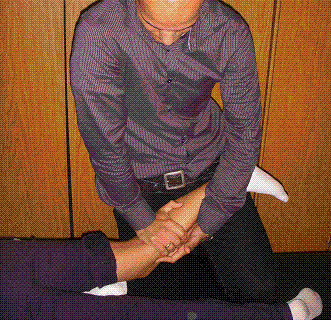Not Sure if the ACL is Torn? Try the Prone Lachman Test!
Reference:Mulligan EP, et al Reliability and Diagnostic Accuracy of the Lachman Test Performed in a Prone Position. J Orthop Sports Phys Ther. 2011 Sep 4.
Having trouble with the Anterior Drawer Test or the regular Lachman Test? Try the new and improved Prone Lachman Test now shown to have excellent reliability and validity.
Step #1: With the patient in prone with atowel roll above the knee, place your thigh under the patient?s shin to support the patient?s knee in 10� to 30� of flexion.
Step#2: Place your distal hand on the anterior proximal tibia, with the index and long finger positioned on each side of the patellar tendon, resting on the anterior joint line.
Step#3: With the heel of the other hand apply an anterior force on the posterior tibia, while the fingers of the distal hand simultaneously palpate the amount of anterior tibial translation relative to the femur.
Step #4: Consider the test as positive in the absence of an end feel or a perception of greater anterior translation on the injured side as compared to the uninjured side.
Note: You may require testing the anterior translation at various degrees of the knee flexion, so fiddle around.
Important findings on this ?new? ACL test…
1) The agreement between examiners was 90% (This is considered excellent reliability!)
2) The sensitivity was 70% (Meaning you may rule out an ACL tear if the test is negative)
3) The specificity was 97% (Meaning you can pretty much rule in an ACL tear if the test is positive ? get an MRI to confirm and book to see an orthopaedic surgeon)
Posted on: October 06, 2011
Categories: Knee


